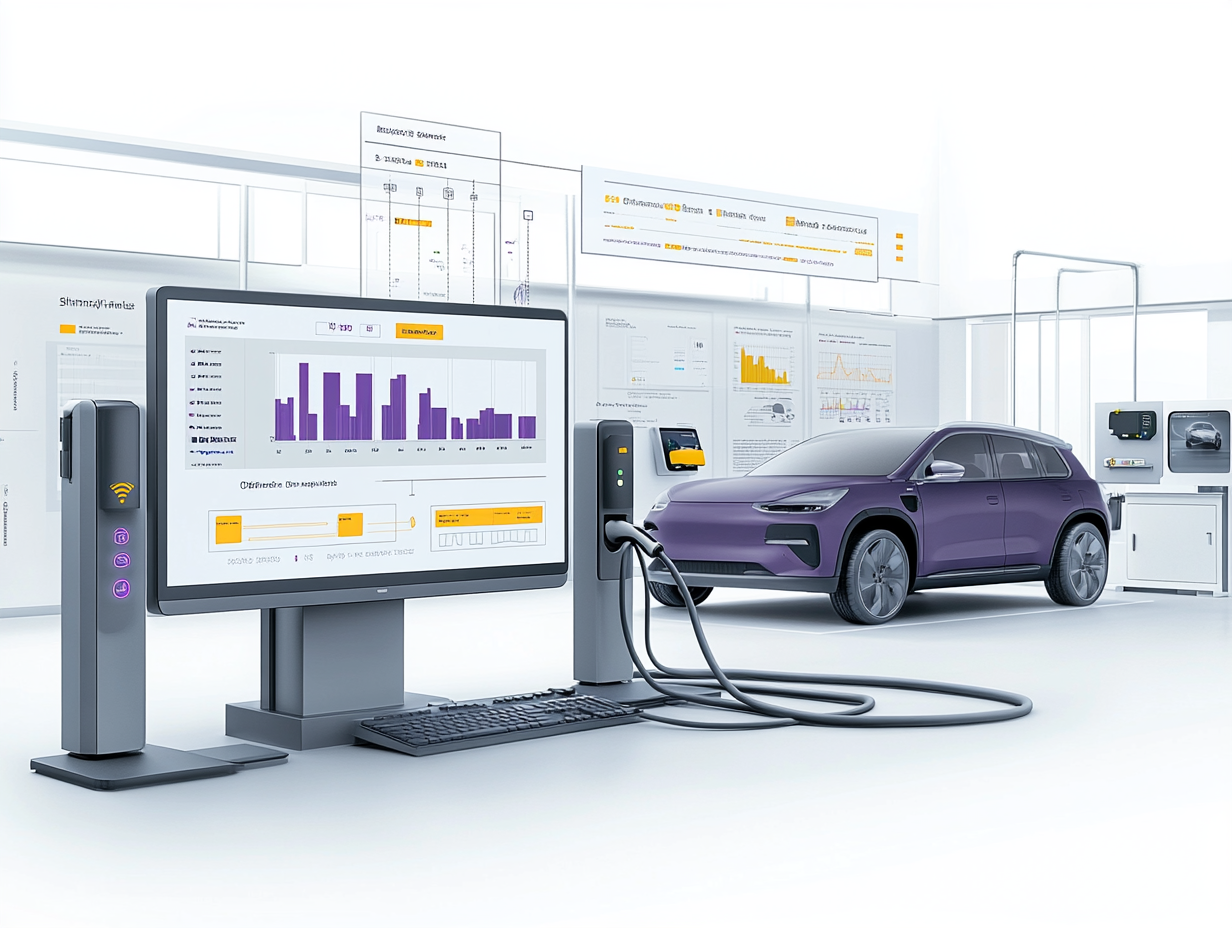
OCPP (Open Charge Point Protocol) is the modern cornerstone of the EV charging infrastructure. The OCPP 2.0.1 version was released in 2020 and has had ongoing improvements since then. It contains entirely new concepts aimed at ensuring stronger security measures, Plug & Charge functionality, Vehicle-to-Grid (V2G) communication, and improved remote diagnostics and troubleshooting.
With all these advancements, it’s no wonder the certification process requires additional attention. Before the EV charger is sent to the testing laboratories accredited by Open Charge Alliance (OCA) for assessments, it undergoes numerous tests — and the main question is, how to go through this preparation process faster and without huge expenditure while at the same time taking all the minor details into account. Let’s see why simulation-based testing becomes an answer and how exactly you can benefit from using it.
Why Is the OCPP 2.0.1 Certification Important?
Even though OCPP certification is not mandatory for all EV chargers, it is a de facto standard used in more than 40 countries. It has a wide range of requirements, including regulatory aspects, security, communication protocols, and interoperability with different vehicles and backend systems for higher flexibility and simplified integration.
Getting a charging station OCPP 2.0.1 certified costs €7.500 for OCA Members and €11.000 for non-members. This is not a one-time payment but the price of each attempt. To prevent the expenses from piling up and get ready to pass the tests the first time, you can use TimeTick’s simulator. It runs your system through the same tests that you will undergo during certification and provides a report with problems and recommendations for fixing them. This saves you both time and money since you can check if your system is ready, fix errors early on, and avoid multiple payments.
The process of getting OCPP 2.0.1 certified is challenging but straightforward. The certification is run by the Open Charge Alliance which tests the devices to validate compliance. You can apply for a full or subset certificate, including mandatory and optional features. The main features to test in advance include the following:
- Booting, authorization, and configuration
- Basic operations like starting and stopping charging sessions
- Status notifications and proper error reporting
- Firmware management
- Smart charging
- Transactions
- TLS encryption and improved security of data transferring
- Energy consumption and metering
- Remote control
In the OCA-accredited testing facilities, your EV charger will go through two types of assessments: conformance tests and performance measurements. The former evaluates if the device works as expected in different scenarios and communicates properly with the central management system; the latter measures response times in stress situations, the ability to handle high loads of simultaneous requests, and overall reliability in typical and extreme operating conditions.
Before submitting your charger to the OCA, one of the most effective ways to make sure it is compliant is by using simulation tools. This is where TimeTick helps by providing automated testing solutions.
How Simulations Make It Simpler?
Simulation-based testing for EV chargers provides you with an environment that mimics the features of a charging network’s central system (CSMS). The closer the simulation is to real-world situations, the lower the risk of failure during official certification. In addition to this key benefit, there are a few more.
Faster Testing
![]()
Simulated testing allows you to assess the charger’s performance under varied conditions in a shorter period of time. With TimeTick, you can run up to 400 tests simultaneously, reproducing the operation of devices and systems in a virtual setting. As a result, for example, you can reduce the duration of regression testing from two weeks to about three days.
Available pre-certification tests in simulations cover all the necessary areas:
- Basic commands
- Firmware updates
- Security
- Various stress tests
- Error scenarios
- Edge cases, such as:
- temporary connection losses,
- system overload with a large number of simultaneous charging sessions,
- resuming operations after disconnections or outages,
- error recovery, etc.
Running multiple tests at once — without compromising accuracy — is especially important for small teams and in a stiff delivery schedule. A high-quality simulation for automated testing optimizes the workload of the QA team, saving 80 to 100 man-hours a month on regression and complex cases and giving extra room for more thorough analysis.
Lower Costs
Along with being less time-consuming, simulation-based testing is also more pocket-friendly. Simulations reduce the need for complex hardware systems, multiple physical prototypes, and other expensive infrastructure. A virtual environment is also indispensable for scalability testing. It becomes possible to test multiple setups and scenarios without extra costs or little software copay. For example, TimeTick offers usage-based pricing. It is calculated per minute of operation of real or virtual testing devices regardless of the number of tests you run simultaneously. There is also an option of installing an on-premises system on your servers; check out the pricing model and contact us to get the most suitable solution.
Second-line benefits might be even more significant in the long run. With simulations, there are more opportunities for remote team collaboration, so virtual access helps to save on logistics. Finally, a thought-out simulator aids in identifying and troubleshooting bugs and misconfigurations instantly. The probability of mistakes decreases, and those occurring are found prior to deployment, which protects you from additional expenses for resolving costly errors or potential field failures later on.
Reduced Human Factor
![]()
Human error in the pre-certification process, be it a mistake in data entry or a misinterpreted result, can lead to missed requirements. Automated testing reduces such risks and helps QA teams run exhaustive tests on different EV types, multiple network configurations, interactions with the backend — all with higher precision and optimized effort.
Simulators also reduce the number of rounds of physical testing, which, in turn, contributes to a lower probability of mistakes as well. A simulation tool helps to track all the features, cross-reference with the requirements, and tick checklists faster, providing consistent and transparent logs and reports.
The most significant impact is visible in testing complex functionalities such as security. A simulator can set up rare events and edge cases promptly and accurately calculate potential outcomes.
Above & Beyond
![]()
After formal certification testing, you still benefit from using simulations. You can test new features and firmware versions and provide troubleshooting quickly to make sure the device remains compatible. When it comes to stress tests and complex test scenarios, conducting them without a simulator is practically impossible.
Indeed, TimeTick’s simulation-based testing helps you on a daily basis by saving operational costs. Every month, it can help save $20k+ due to streamlined features development, QA, and customer support, among others. The sales team also reaps the benefits through simulating the infrastructure operation and conducting high-quality demos for your clients.
Conclusion:
You can swiftly validate the EV charger’s compliance with OCPP 2.0.1 standards using virtual testing and diagnostics tools such as TimeTick. Whether you need to assess hardware or software components, you can do it in real-world scenarios without physical infrastructure. A simulator replicates even complex events necessary for stress tests, so you can analyze how your device will work under different conditions beforehand, minimizing costly delays.
